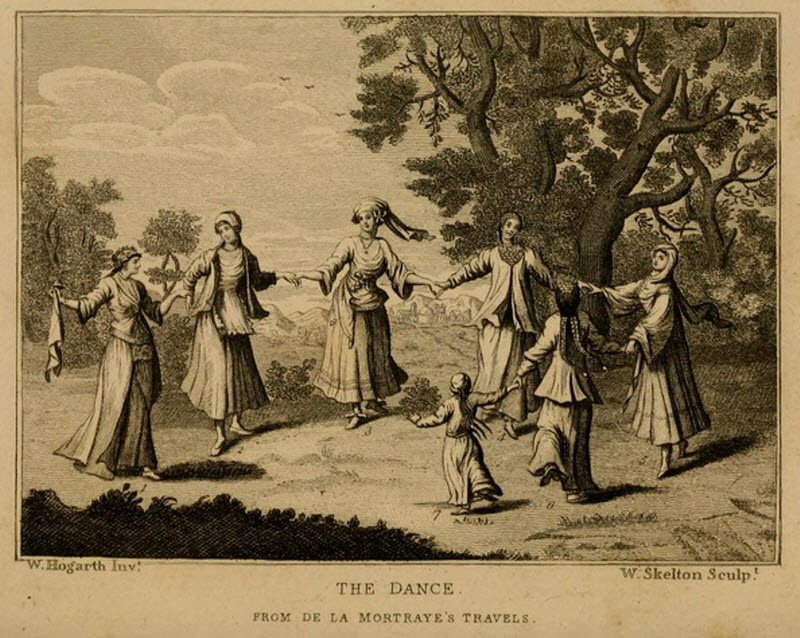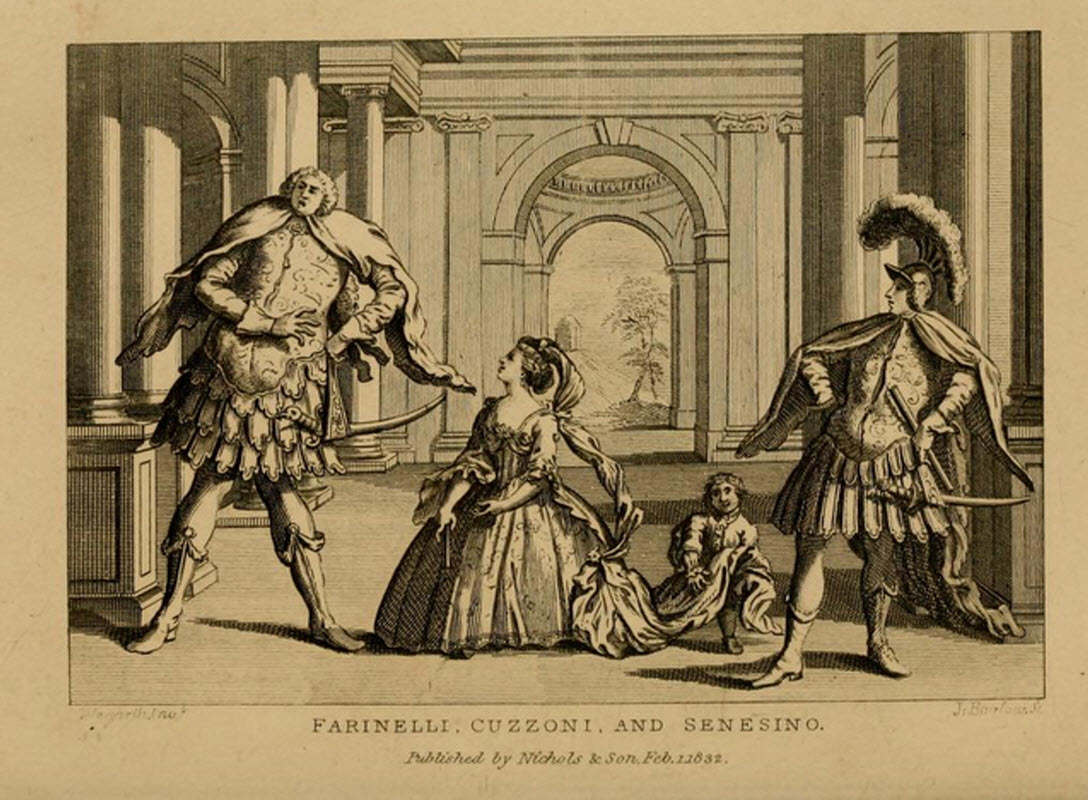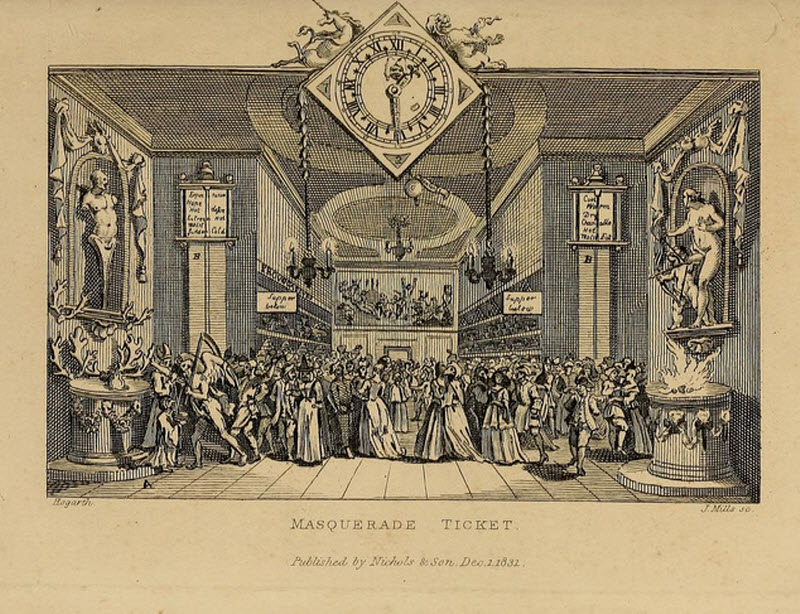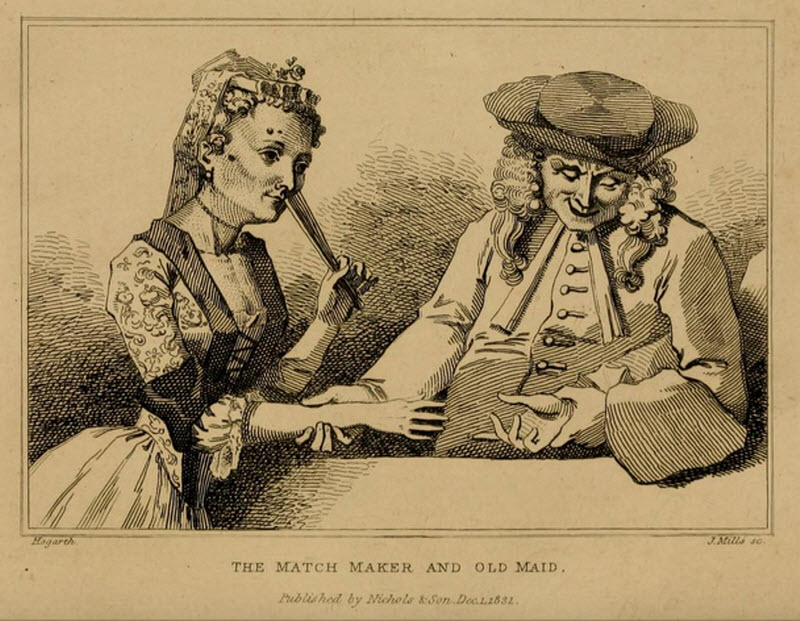Biography and Summary of William Hogarth's Career
William Hogarth was a painter and engraver; b. in London, Nov. 10, 1697, and at first apprenticed to Ellis Gamble, a silver-plate engraver. While still an apprentice he engraved his first plate for printing, a business card for his master; and he was hardly out of his time and a free man before Hogarth made his own business card, “ W. Hogarth Engraver,” in a very well-designed frame in the taste of the time, and dated “April 23, 1720,” showed that he intended at first to follow the trade he had learned, and engrave ornamental designs on silver vessels and the like. But he had a chance to engrave illustrations for one or two books, and then in 1724 appeared the first of his many satirical prints, Masquerades and Operas. In this are shown crowds at the gate of the opera-nouse, of the pantomime, of a juggler, and another crowd helped by the devil in person into the building wherea masquerade is to be held, while a wheelbarrow full of books lettered with the names of the great English dramatists is being trundled away for sale to the shops as waste paper. Beyond is the gate of Burlington House, lettered "Academy of Arts." and upon its summit is a statue entitled, "W. Kent," the name of a not wholly despicable painter, gardener, architect, and general utility man in high favor just then, while seated statues of Raphael and Michelangelo serve as pendants.

It is an awkward design, but Hogarth had already learned to draw men and women in movement, and to compose a crowd, which not; every painter can do. About 1726 he began to paint seriously in oil, giving the reason for this in his remarks about the stealing of his designs by publishers, who copied his prints with but slight changes, and sold these copies instead of his own works. His early paintings were nearly all groups and scenes of several persons in each. Before 1781 he had completed the six important pictures of The Harlot's Progress, and in that year he exhibited them, issued his engraved ticket to subscribers for the prints, received nearly 1200 names, and began the engraving, which he did entirely with his own hand, as it appears. The invasion of his rights as designer was in great part remedied by a bill which passed Parliament in 1785, and which was in a great measure obtained by Hogarth's efforts. Meantime the eight pictures of The Rake's Progress had been painted, exhibited, and engraved; his subscription ticket this time was the well-known Laughing Audience; there were many subscribers, and the prints were ready in the summer of 1785, About the same time his father-in-law, Sir James Thornhill, having died, the art school, of that painter came into Hogarth's hands; out of it there grew a society for art study with classes for study of the living model, and this flourished and was useful until made unnecessary in 1762 by the newly established schools of the Royal Academy.

Hogarth painted some religious pictures and some portraits about this time; in 1740 the admirable portrait of Capt. Coram, chief organizer of the London Foundling Hospital, in which institution that fine head, with the immortal March to Finchley, and two large paintings of biblical subjects are still to be seen. The set of Morning, Night, Noon, and Evening, with admirable studies of out-of-door life in London, the Strolling Actresses Dressing in a Barn, the Enraged Musician, and the Distressed Poet belong to this time, and then followed what is often called his masterpiece, the set of the Marriage a la Mode. All the original pictures are preserved, except the Actresses, which was burned many years ago; the six pictures of the Marriage are in the National Gallery in London, together with a portrait of Hogarth by himself, with a dog beside him, a portrait of Simon Fraser, Lord Lovat, and one of Mary Hogarth -- all these being works of this his best time. All these pictures were engraved, and the prints sold readily, He was fifty years old, and in comfort as a worthy citizen of London, but his diligence and vigor never flagged, and he produced in rapid succession Calais Gate (1749); the March to Finchley, in which he made admirable fun of the confusion attending the breaking up of a camp, as he had seen it when the Guards began their march toward Scotland at the coming of the Young Pretender in 1745; and The Election, four pictures of the abuses and oddities of a parliamentary election contest. All these were engraved, and some large satirical prints were issued of which no paintings are known ; moreover, a great number of small studies, subscription tickets, book-plates, and the like were published.

There are two points of view from which Hogarth should be especially studied -- (1) as an original engraver (see Engraving), a peintre-graveur, if there ever was one; and (2) as one of the first of those men who have been at once artists in the technical sense, careful of anil successful in the use of color, and historians or chroniclers, great at the telling of a tale. His methods as a painter were excellent, his work has endured the test of time, and is generally well preserved; and it is most worthy, sound, and meritorious, his power of story-telling, his handling of a busy and moving crowd, his gift at telling and appropriate detail, his satiric and humorous insight are all unsurpassed. The prints are of endless interest from their subject, and those of them which are from his own engravings show a strong and capable touch as an engraver; but to study his work in the original paintings is to gain a lesson in the combination of fine art with description, narrative, and satire hardly to be matched elsewhere.

Hogarth died Oct. 25, 1764. His most important workshave been named above. Small engraved copies of the greater number of his compositions have been made, and have been republished frequently, Nichols & Stevens's The Genuine Works of William Hogarth (3 vols., 1808-17) contains 210 of these octavo-size prints. Mr. Austin Dobson, who wrote the article Hogarth in the Encyclopaedia Britannica and that in the Dictionary of National Biography, has expanded the latter article into a volume, William Hogarth (1891), containing eleven photogravures and about forty other illustrations. Russell Sturgis.